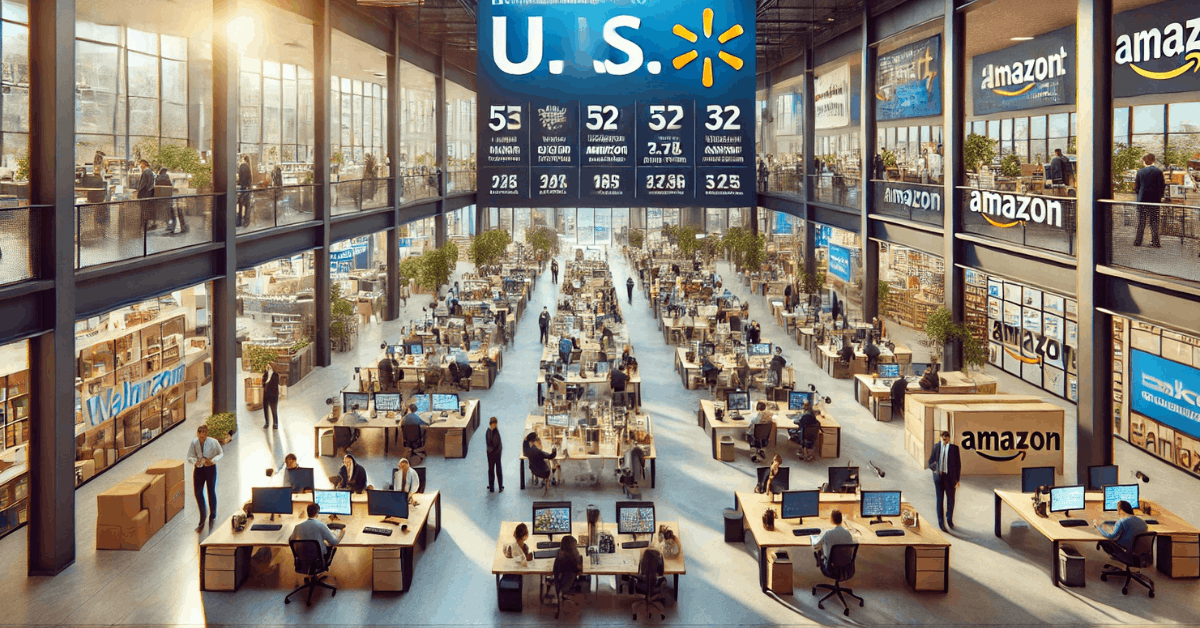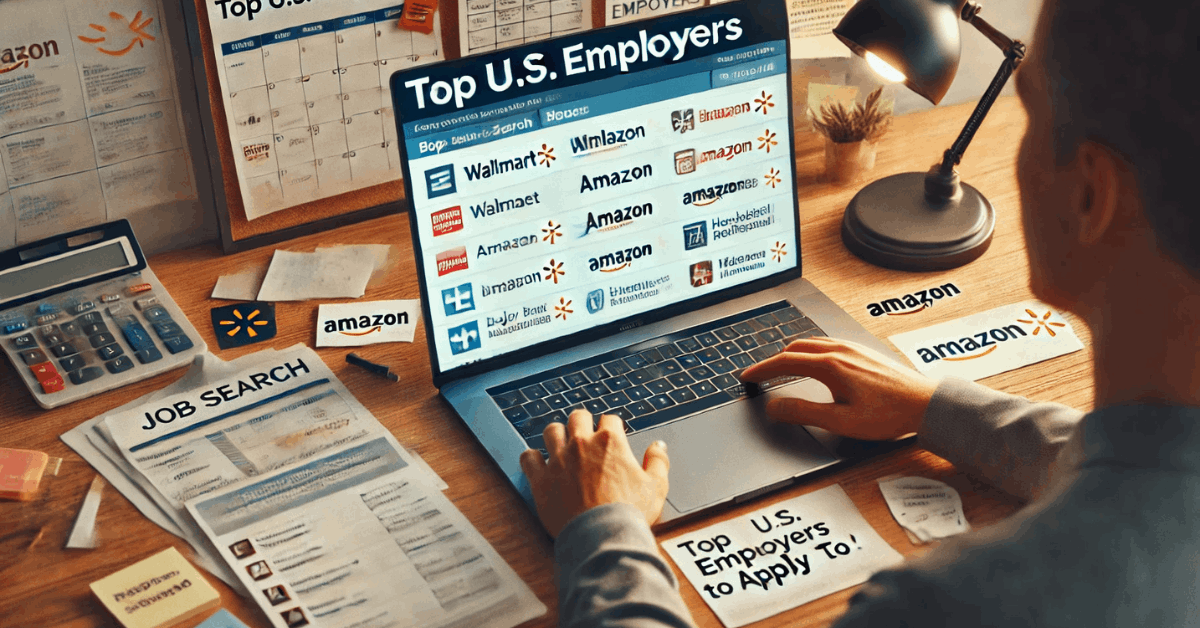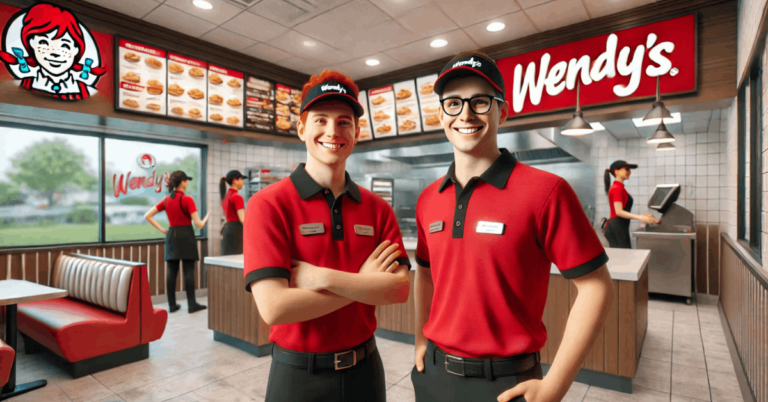The five biggest employers in the U.S. play a significant role in shaping the country’s workforce. These companies influence wages, job availability, and overall labor trends.
Understanding who they are helps you see where jobs are growing and which industries are dominant. This article breaks down each employer and why they matter right now.
Why It Matters to Know the Biggest Employers?
Knowing the largest employers gives you a clear view of how the job market works. These companies often set standards for pay, work hours, and benefits.
They also affect how many jobs are available in certain industries or locations. If a major employer grows or cuts jobs, it can change local economies fast.
These trends help job seekers and workers make smarter career choices. It’s also useful for understanding which sectors are stable or changing.

Largest Employers In The U.S. Today
The five biggest employers in the U.S. affect millions of workers. This guide explains who they are and what they do.
Walmart
Walmart is one of the largest private employers in the U.S. It hires for store, warehouse, and office jobs.
Total Number Of U.S. Employees
Walmart has about 1.6 million workers in the U.S. Most work in stores or distribution centers. Some roles are in tech and offices.
Main business model and industry:
- Retail stores and local markets
- Online orders with pickup or delivery
- Pharmacy and basic services
Typical roles:
- Cashiers and store associates
- Stockers and freight handlers
- Team leads and managers
Wages And Employee Benefits Overview
Pay starts at $14–$17/hour, depending on the area. Full-time staff get health insurance and 401(k). Many receive paid time off and tuition aid. Part-time workers may get fewer benefits.
Notable Facts
Walmart promotes from within. It hires from diverse backgrounds. It faces some criticism over pay. But it remains a top job source.
Amazon
Amazon hires fast and at scale. It offers jobs in tech and warehouse work.
Total Number Of U.S. Employees
Amazon has over 1 million U.S. workers. Many are in logistics or delivery. Others work in tech and office jobs.
Main operations:
- Retail and delivery
- Warehouse logistics
- Cloud computing (AWS)
Typical job types:
- Packers and warehouse staff
- Delivery drivers
- Tech and office workers
Pay scales and benefits:
- Starts at $17–$20/hour
- Health plans and 401(k)
- Education support
- Bonuses in some areas
Work Culture And Current Controversies Or Reforms
Warehouse work is fast-paced. Some workers raise safety concerns. Union talks have grown in some sites. Amazon has made small changes in response.
United States Federal Government
The federal government is the biggest overall employer. It hires in many roles and regions.
Number Of Civilian Employees
Around 2 million civilians work for the U.S. government. Roles vary by agency. Military staff are not counted here.
Types of roles:
- Office support
- Postal services
- Defense and logistics
- Public health
Agencies With The Highest Employment
- U.S. Postal Service (USPS)
- Department of Veterans Affairs (VA)
- Department of Defense (DoD)
Job Security, Benefits, And Hiring Process
Jobs offer stability and full benefits. Includes healthcare and retirement plans. The hiring process is slow and formal. Some roles need security clearance.
Importance Of Federal Employment In Rural Areas
Federal jobs help small towns. USPS and VA provide steady work. These roles support local economies. They also bring reliable income.
Berkshire Hathaway
Berkshire owns many U.S. companies. It hires across insurance, rail, and retail.
Total Employment Across Its U.S. Businesses
It employs over 360,000 people in the U.S. Jobs vary by company. Each brand manages its own hiring.
Sectors covered
- Insurance
- Rail transport
- Retail and manufacturing
Key Subsidiaries And Job Types
Major brands include GEICO and BNSF. Common jobs are claims agents, train operators, and sales staff.
Wages And Employee Retention
Pay depends on the brand. Many jobs have strong benefits. Union roles offer stability. Retention is high in some companies.
Growth Outlook And Job Stability
Berkshire brands are stable employers. Some are expanding. Workers can grow across brands. Outlook varies by unit.
McDonald’s
McDonald’s runs corporate and franchise locations. It hires for entry-level restaurant jobs.
Number Of Employees
McDonald’s has about 800,000 workers in the U.S. Most work in stores. Many are part-time.
Common roles:
- Crew members
- Shift leaders
- Maintenance staff
Entry-Level Nature And Accessibility
Jobs are open to new workers. Many are flexible. Great for students or part-timers.
Benefits And Career Development Programs
Full-time staff may get healthcare and PTO. Some get tuition help. McDonald’s offers training. Benefits depend on the location.
Role In Youth And Part-Time Employment
McDonald’s is often a first job. It builds basic work skills. The company supports flex hours. Many use it to rejoin the workforce.
How They Compare On Pay And Benefits?
These companies offer different pay and perks depending on the role. Here’s how they stack up.

Basic Wage Comparison
Walmart and McDonald’s start around $14–$17/hour. Amazon offers slightly more, around $17–$20/hour.
Federal jobs vary, but most pay based on the GS scales. Berkshire companies differ by brand but often pay above the retail average.
Health Insurance, 401(k), And Tuition Support
Amazon and Walmart provide health coverage, 401(k), and tuition help for full-timers. McDonald’s offers similar benefits, but access depends on the franchise.
Federal workers get full government-backed packages. Berkshire brands manage benefits on a company-by-company basis, with some offering strong union plans.
Union Activity And Worker Rights
Union presence varies across these workplaces. Some are more active than others.
Where Unions Are Active?
Federal jobs have strong union coverage, especially in the USPS and the VA. Amazon has seen union drives in warehouses.
Walmart and McDonald’s have fewer unions. Some Berkshire companies, like BNSF, are unionized.
Recent Labor Disputes Or Negotiations
Amazon workers pushed for better safety and schedules. Federal unions negotiated raises and policy protections.
Fast food workers have led wage protests. Warehouse and rail workers have also demanded better terms.
Local And National Economic Impact
Large employers affect cities, regions, and national trends. Their moves create ripple effects.
Impact On Job Growth And Cities
Opening a warehouse or call center boosts local jobs. Store closures, like Walmart exits, hurt small towns.
These firms shape regional hiring trends. They also affect traffic, housing, and small business income.
Openings And Closures
Amazon continues opening logistics sites across states. Walmart closed underperforming stores in 2024.
McDonald’s adds new locations in high-traffic zones. Berkshire’s rail and energy units bring jobs to less-populated areas.
Hiring Trends And What’s Ahead
Some companies are growing fast, others are slowing. Trends show where jobs may rise or drop.
Who’s Expanding Or Shrinking In 2025?
Amazon and some Berkshire units are expanding. Walmart is steady but cautious with growth.
McDonald’s adds stores in urban areas. Federal agencies are rehiring for key roles after past cuts.
Automation’s Impact On Jobs
Self-checkouts, robotic sorters, and AI tools are increasing. This means fewer entry-level roles in some sectors.
Companies focus on tech-heavy operations to cut costs. Jobs may shift to maintenance or system support.
The Bottom Line On The Biggest Employers In The U.S. Right Now
The biggest employers in the U.S. right now shape how people work, earn, and grow. Their choices affect wages, benefits, and local economies.
Some are expanding, others are shrinking or automating. Knowing how they operate helps you track where jobs are headed.











